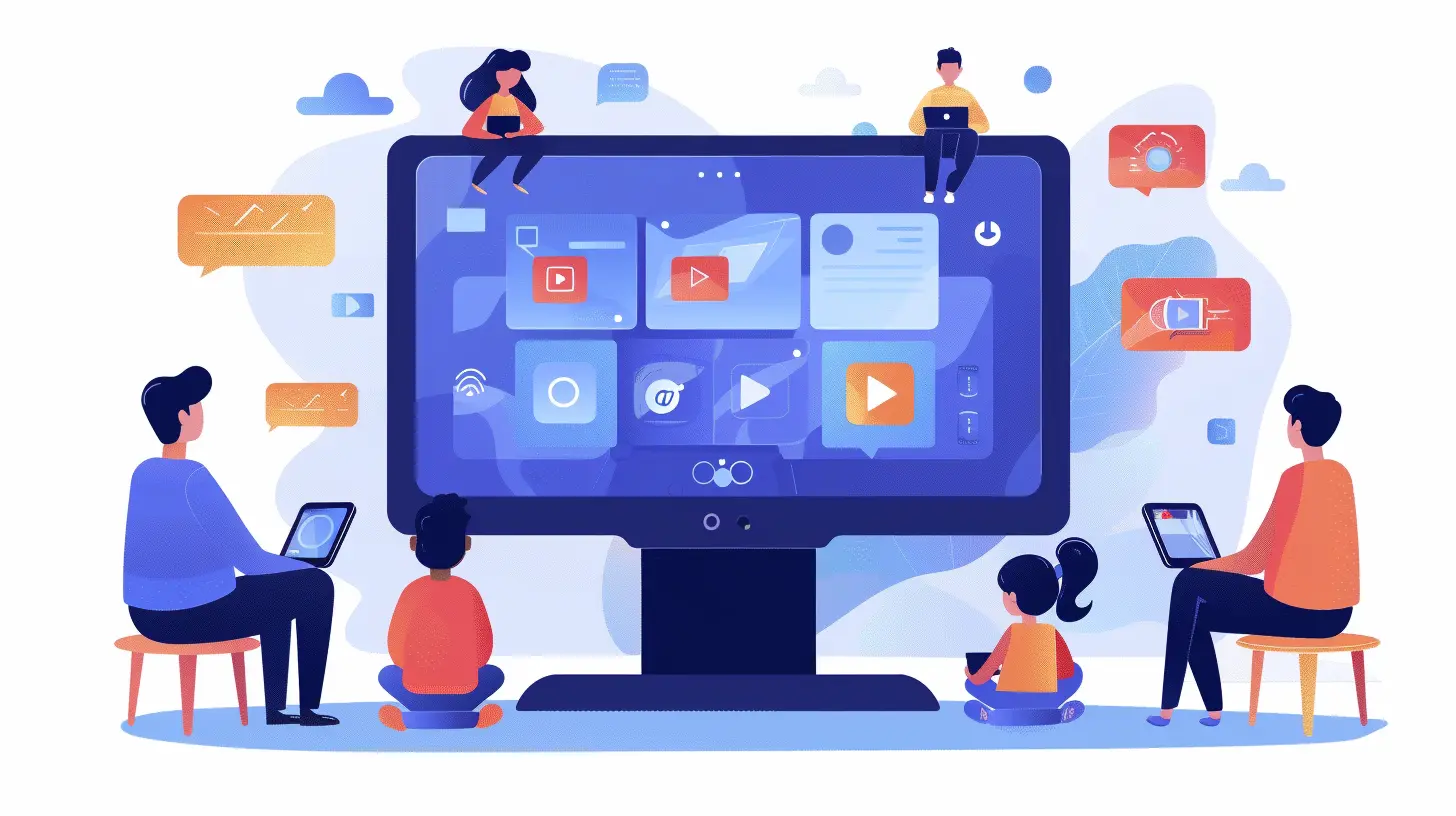How to Limit Screen Time Without the Meltdowns
8 September 2025
Let’s face it — screens are everywhere, and if you're a parent, you've probably had more than a few battles trying to pry a tablet or phone out of your child’s hands. Whether it's a toddler glued to YouTube Kids or a tween locked into endless video game marathons, the struggle is real.
But here's the good news: You can limit screen time without triggering full-blown meltdowns. Yes, it’s possible — and no, it doesn’t involve bribery, threats, or hiding the Wi-Fi router in the closet.
Let’s dive into practical, sanity-saving tips to help you set healthy screen limits without World War III erupting in your living room.
Why Limiting Screen Time Matters
Before we jump into the how-tos, let’s talk about why screen time deserves your attention.Too much screen time has been linked to sleep problems, poor focus, reduced physical activity, and even social and emotional issues. Kids need real-world experiences — playing, moving, talking, and exploring — to thrive. Think of screen time like dessert: a little is fun, but too much can spoil everything else.
Understanding the Meltdown Triggers
Ever noticed how your child turns into a mini Hulk when you ask them to turn off the TV? You’re not alone. The reason? Screens are stimulating — they flood kids' brains with dopamine, the feel-good chemical. So when you take that away, it’s like pulling the plug on their happy place.But here's the thing: it’s not just the dopamine. It’s also the abrupt transition. Imagine being pulled out of your favorite Netflix thriller just as the plot unfolds. Frustrating, right?
The key isn’t just limiting screen time. It’s about limiting it gracefully.
Set Clear and Consistent Rules
Kids thrive on routine and clarity. Ever taken them to a playground and said, “You can play until I say stop”? Cue the protests.Instead, be specific. Try:
- “You can watch one 30-minute show”
- “You get 1 hour of gaming after homework”
- “Screens go off at 7 PM, no exceptions”
Write it down. Create a chart. Make it visual. When the rules are clear and consistent, your child won't feel ambushed every time you enforce them.
> _Consistency is the secret sauce to avoiding meltdowns._
Have a Countdown Routine
Kids are not big fans of surprises — especially when it means ending something fun. Just like transitions in preschool, screen time needs warnings.Try this:
- 10-minute warning: “You’ve got 10 minutes left, buddy.”
- 5-minute warning: “Five more minutes and then time to switch off.”
- 2-minute warning: “We’re almost done. Start wrapping up.”
When they know it’s coming, they’re way more likely to handle the change without screaming into a couch cushion.
Offer Choices, Not Commands
Nobody — not even kids — likes being told what to do all the time. Giving choices helps them feel in control. Instead of saying, “Turn off your iPad now,” try:- “Do you want to turn it off in 5 minutes or 10?”
- “Would you rather stop watching after this episode or after this game round?”
These little choices make a huge difference. It’s like giving them the steering wheel — even if you pick the road.
Replace Screens With Something Equally Fun
A big reason kids resist giving up screens? They feel like they're losing all the fun.So flip the switch. Replace screen time with something engaging:
- Spark a Lego building challenge
- Invite them on a mini scavenger hunt
- Bake cookies together
- Do a silly dance-off in the kitchen
Make offline time exciting, not boring. If your child sees screen-free time as a punishment, they’ll always dread it.
Create a Screen-Free “Magic Hour”
Here’s a trick that works like, well, magic: Establish a time each day that’s screen-free for everyone, including you. No phones, no TV, just family time — playing games, talking, reading, being together.Call it “Family Hour” or make up a fun name your kids help choose. When screens go off for everyone, your child won’t feel singled out.
Bonus? You’ll be modeling the behavior you want them to follow.
Use Tech to Your Advantage
Here’s the irony: Tech can actually help you limit screen time.Use parental controls, timers, and screen-time management apps to set healthy boundaries automatically. Some tablets will shut down apps when the time is up — no nagging necessary.
This removes you from being the “bad guy” — and puts the limit in the hands of the technology itself.
Set Screen-Free Zones
Make certain areas of your home no-screen zones:- The dinner table
- Bedrooms
- The car during short drives
- Outdoor spaces
When screens aren't an option in these places, your kids are less likely to reach for them. These boundaries create a healthier relationship with screens — and more opportunities for connection.
Talk About the Why
Kids aren’t born understanding moderation. So talk to them! Explain in simple terms why screen limits exist:- “Too much screen time can make your brain tired.”
- “Your body needs to move to stay strong and healthy.”
- “Real-life fun is just as awesome as digital games.”
Make it part of an ongoing conversation, not a one-time lecture. The more they understand the “why,” the more they’ll own the habits.
Reward Screen Breaks
Instead of using screen time as a reward, flip the strategy. Reward screen-free time! Celebrate when your child chooses to play outside, read, draw, or build something.Try:
- Earning points toward a special toy
- Picking the next family movie night
- Going out for ice cream
Positive reinforcement works better than punishment 9 times out of 10. Make screen breaks feel like a win, not a loss.
Model What You Want to See
Yep, we’re calling ourselves out here.If your child sees you glued to your phone 24/7, don’t be surprised when they mimic the behavior. Kids don’t just hear rules — they watch us like hawks.
So put the phone down when you're with them. Show them that life happens outside the screen too.
Be Patient — And Flexible
Changing screen habits doesn’t happen overnight. There will be missteps, grumbles, and (yes) occasional meltdowns. That’s okay.Be patient. Stick to your goals, but stay flexible. Some days may call for more screen time (like a rainy day stuck indoors), and that’s fine.
Focus on creating a healthy balance that works for your family — without guilt or perfectionism.
What About Teens?
Ah, teens. Masters of negotiation and screen multitasking. Limiting their screen time requires a different playbook.Try involving them in the decision-making:
- Ask for their input on daily limits
- Discuss the impact of screen overuse (like poor sleep or stress)
- Set screen curfews, especially at night
Respect their growing independence, but don’t shy away from setting boundaries. Just like with younger kids, clarity and consistency still apply.
Script for the Tough Conversations
Not sure how to start the conversation? Here’s a sample that works for kids of all ages:> “Hey, I’ve noticed we’ve all been spending a lot of time on screens lately. I think we could use a better balance so we can sleep better, play more, and enjoy time together. I’m going to start setting some limits — not to punish anyone, but to help us feel our best. We’ll figure it out together, okay?”
No shame. No blame. Just a healthy reset.
When Meltdowns Still Happen…
Because yes, they still might.Stay calm. Don’t match their big emotions. Offer comfort and empathy without giving in. Acknowledge their feelings:
> “I know it’s really hard to stop your game. It’s super fun, and you're having a great time. But it's time to take a break now.”
Be the calm in their storm. Over time, with consistency, the meltdowns will lessen. Promise.
Final Thoughts: It’s About Progress, Not Perfection
Limiting screen time isn’t about cutting out all technology. It’s about building healthier habits, stronger connections, and more balance in your child’s life.Will there be pushback? Probably. Will your child thank you later? Maybe not out loud — but yes, they will.
Remember: You're not just unplugging devices. You're helping your kids plug into life.
all images in this post were generated using AI tools
Category:
Tech And KidsAuthor:

Steven McLain
Discussion
rate this article
1 comments
Rusty McEvoy
Screen time battles can feel like epic showdowns! Try transforming limits into fun challenges—like screen-free scavenger hunts or tech-free family game nights. This way, you’re not just saying ‘no,’ but inviting creativity and connection instead. Who knew limits could spark joy?
September 17, 2025 at 3:27 AM

Steven McLain
Thank you for your insightful comment! Transforming screen time limits into engaging challenges is a fantastic approach to fostering creativity and connection. Your suggestions are a great way to make the experience enjoyable for everyone!


